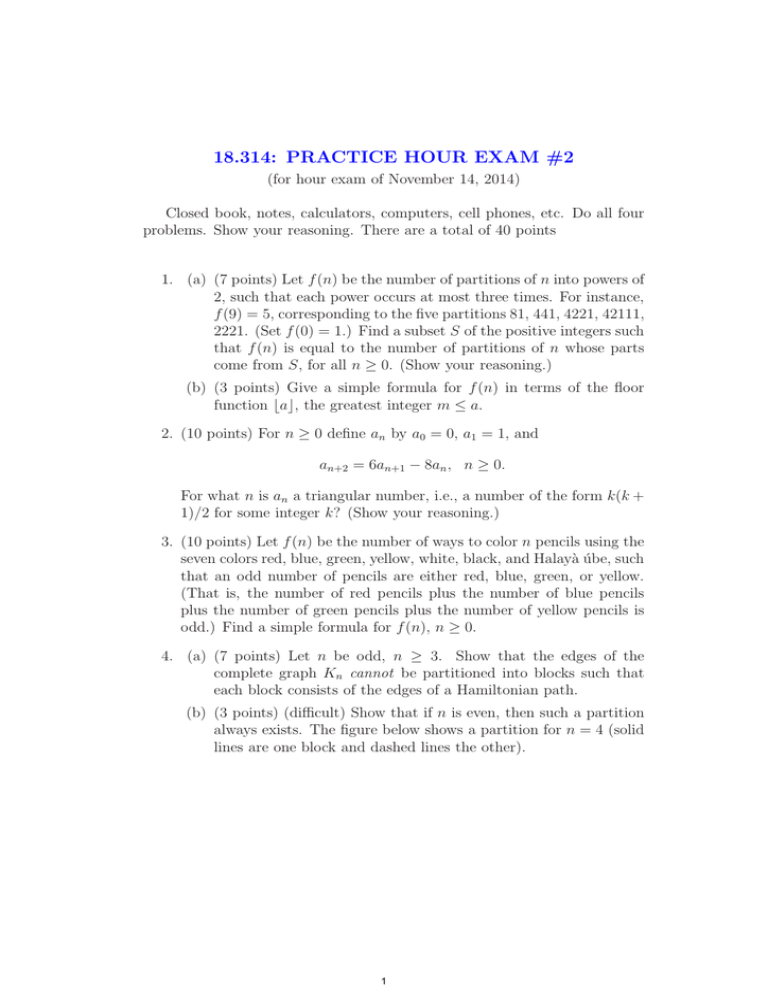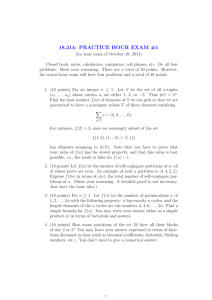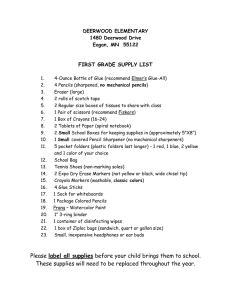18.314: PRACTICE HOUR EXAM #2
advertisement

18.314: PRACTICE HOUR EXAM #2 (for hour exam of November 14, 2014) Closed book, notes, calculators, computers, cell phones, etc. Do all four problems. Show your reasoning. There are a total of 40 points 1. (a) (7 points) Let f (n) be the number of partitions of n into powers of 2, such that each power occurs at most three times. For instance, f (9) = 5, corresponding to the five partitions 81, 441, 4221, 42111, 2221. (Set f (0) = 1.) Find a subset S of the positive integers such that f (n) is equal to the number of partitions of n whose parts come from S, for all n ≥ 0. (Show your reasoning.) (b) (3 points) Give a simple formula for f (n) in terms of the floor function ⌊a⌋, the greatest integer m ≤ a. 2. (10 points) For n ≥ 0 define an by a0 = 0, a1 = 1, and an+2 = 6an+1 − 8an , n ≥ 0. For what n is an a triangular number, i.e., a number of the form k(k + 1)/2 for some integer k? (Show your reasoning.) 3. (10 points) Let f (n) be the number of ways to color n pencils using the seven colors red, blue, green, yellow, white, black, and Halayà úbe, such that an odd number of pencils are either red, blue, green, or yellow. (That is, the number of red pencils plus the number of blue pencils plus the number of green pencils plus the number of yellow pencils is odd.) Find a simple formula for f (n), n ≥ 0. 4. (a) (7 points) Let n be odd, n ≥ 3. Show that the edges of the complete graph Kn cannot be partitioned into blocks such that each block consists of the edges of a Hamiltonian path. (b) (3 points) (difficult) Show that if n is even, then such a partition always exists. The figure below shows a partition for n = 4 (solid lines are one block and dashed lines the other). 1 2 MIT OpenCourseWare http://ocw.mit.edu 18.314 Combinatorial Analysis Fall 2014 For information about citing these materials or our Terms of Use, visit: http://ocw.mit.edu/terms.


